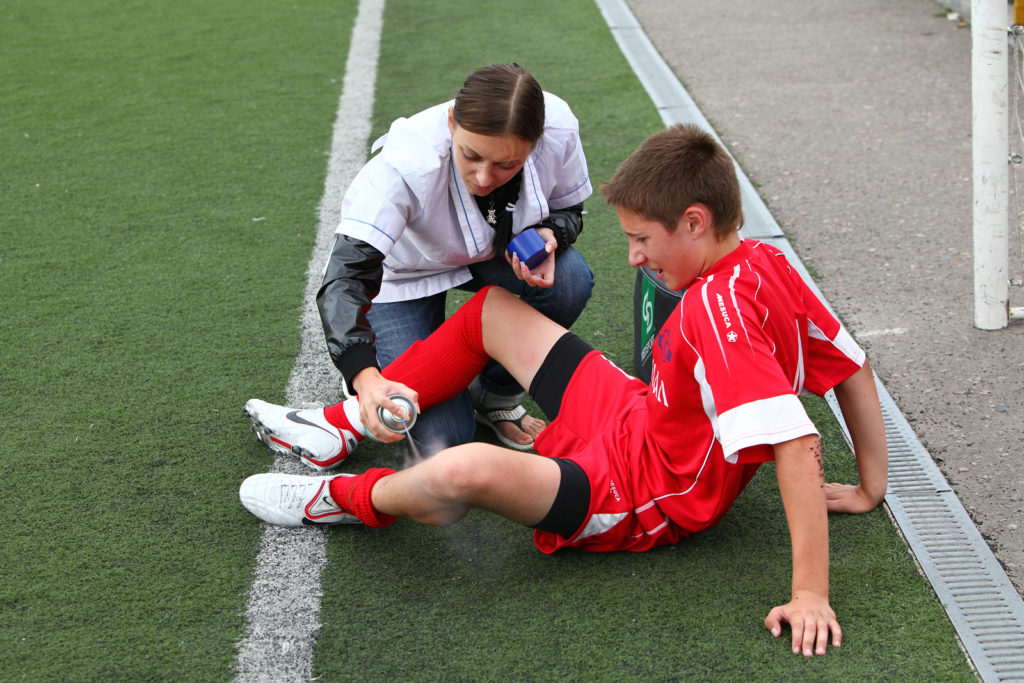Youth sports provide a valuable platform for children to cultivate physical fitness, cultivate crucial life skills, and cultivate social connections. Nevertheless, similar to any form of physical exertion, engaging in these activities carries the inherent risk of sustaining injury. The comprehension of the etiology of youth sports injuries, strategies for their prevention, and the parental role in ensuring the safety of young athletes is of utmost importance. This essay aims to explore the realm of injuries in juvenile sports, offering valuable perspectives for parents, coaches, and young athletes.
The Etiology of Youth Sports Injuries:
Overuse injuries are widely recognized as a leading contributor to youth sports-related injuries. These injuries manifest when adolescent athletes partake in repetitive exercises without enough periods of recuperation. Illustrative instances encompass tennis elbow, stress fractures, and swimmer’s shoulder.
Traumatic injuries encompass fractures, concussions, and sprains, which can arise from inadvertent collisions, falls, or direct impacts occurring in contact sports.
Inadequate Technique: Insufficient form and incorrect technique may exert excessive stress on muscles and joints, hence augmenting the likelihood of sustained injuries.
Insufficient physical conditioning might render young athletes more vulnerable to injury, since their bodies may not possess the requisite preparedness to meet the demands imposed by the sport.
Insufficient Warm-up: Neglecting warm-up activities can lead to muscular rigidity and an increased susceptibility to strains or sprains.
Strategies for Prevention:
Ensuring the Adequacy of Coaching: It is imperative to ascertain the qualifications of coaches and underscore the significance of appropriate technique, conditioning, and safety measures.
In order to mitigate the likelihood of overuse injuries, it is imperative to customize training and competitive activities to align with the child’s age and proficiency level.
Promotion of Sufficient Rest: Advocate for consistent intervals of rest and designated periods of non-work to facilitate bodily recuperation.
The Significance of Warm-up Exercises and Stretching in Preparing for and Recovering from Practices and Games.
Safety Equipment: It is imperative to ensure that adolescent athletes utilize suitable safety equipment specific to their respective sports, including helmets, pads, and mouthguards.
The Significance of Hydration and Nutrition: Educating individuals on the crucial role of adequate hydration and a well-balanced diet in promoting optimal physical performance.
Encourage Young Athletes to Acknowledge and Convey Physical Discomfort: Instilling the ability to identify and articulate sensations of discomfort or pain to coaches and parents.
The Significance of Parental Involvement in Child Development:
Education: It is vital for parents to acquire knowledge and understanding about the specific sport in which their child is engaged, encompassing the potential hazards and requisite safety protocols.
It is imperative to establish and maintain an open line of contact with coaches, enabling you to discuss your child’s growth and address any issues pertaining to their safety.
Promote Support and Encouragement: Foster a positive environment for your child to derive enjoyment from their participation in sports while refraining from imposing excessive expectations on them to prioritize winning above all else.
Surveillance: Exercise vigilance in observing any indications of physical harm or distress exhibited by your kid, and promptly seek professional medical guidance as necessary.
Maintaining a Balanced Schedule: It is advisable to refrain from excessively scheduling children with many sports commitments or rigorous training regimens. It is advisable to allocate sufficient time for rest and engage in various activities.
Role modeling involves demonstrating desired behaviors and characteristics by actively engaging in physical activities and consistently adhering to a healthy lifestyle.
Emotional sympathy: It is imperative to exhibit sympathy and empathy towards your child in the event that they encounter an injury. The psychological impact can be as substantial as the physiological consequences.
In summary,
it is evident that injuries sustained in adolescent sports are indeed a prevailing issue. However, by implementing appropriate preventive measures, a significant number of these injuries can be mitigated. The assurance of safety in sports is contingent upon the active involvement of parents, coaches, and young athletes themselves, each of whom assumes crucial responsibilities. By placing emphasis on effective coaching, education, and a well-rounded approach to training and competition, adolescent athletes can experience the numerous advantages of participating in sports while mitigating the potential for injuries that may have enduring consequences on their physical and psychological welfare. Remember, a secure and pleasurable sports experience begins with informed and attentive adults.


